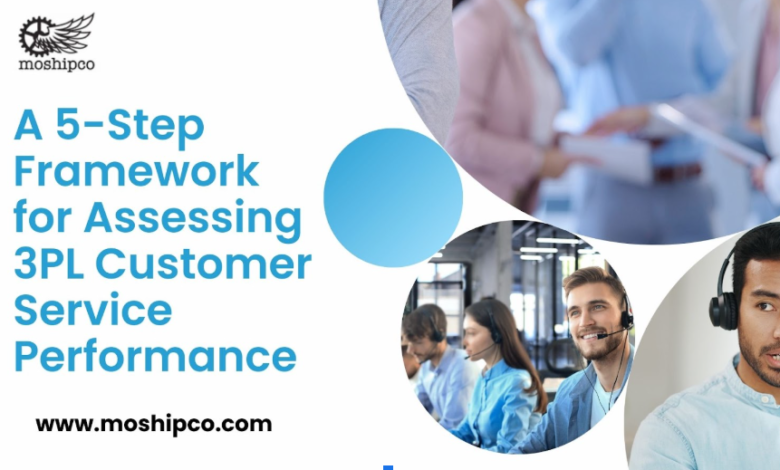A 5-Step Framework for Assessing 3PL Customer Service Performance

Why 3PL Customer Service Matters
When businesses outsource logistics to a third-party logistics (3PL) provider, customer service often becomes the invisible glue that holds everything together. It’s not just about moving goods from one place to another—it’s about creating a smooth experience for customers. A reliable 3PL customer service team ensures that orders are managed correctly, issues are resolved quickly, and clients feel confident about their supply chain operations.
If customer service fails, even the most efficient logistics network can stumble. Delays, missed updates, and poor communication often lead to unhappy customers and lost revenue. That’s why evaluating your 3PL’s performance is just as important as evaluating their cost or delivery speed.
Step One: Measure Responsiveness
The first sign of strong 3PL customer service is responsiveness. How quickly does your provider answer calls, emails, or support tickets? Businesses today expect instant communication, whether it’s through phone order taking services or live chat. A slow response can quickly snowball into delayed shipments and frustrated customers.
To assess responsiveness, track average response times and resolution times. The faster and clearer the communication, the more likely your customers will trust the process.
Step Two: Evaluate Accuracy in Customer Service Order Management
Mistakes in customer service order management can disrupt the entire supply chain. If your 3PL frequently mixes up orders, ships to the wrong addresses, or fails to provide accurate tracking information, it’s a red flag. Accuracy is about more than just moving goods—it’s about paying attention to detail.
You can measure accuracy by checking error rates, comparing promised delivery times with actual performance, and reviewing how often corrections are needed. Consistency is the ultimate measure here.
Step Three: Review Problem-Solving Skills
Every logistics operation will face challenges, from damaged goods to late deliveries. What sets a reliable 3PL apart is how well they handle these problems. Do they own the issue, provide timely updates, and suggest practical solutions? Or do they avoid responsibility and leave clients scrambling?
Good problem-solving is proactive. Instead of waiting for the customer to complain, a strong 3PL will notify clients of an issue and explain the steps being taken to resolve it. This builds trust and demonstrates accountability.
See also: AI Face Swap Technology and Its Role in Virtual Reality
Step Four: Look at Technology and Tools
Modern 3PL customer service depends heavily on technology. Tools that support real-time tracking, order visibility, and streamlined communication can make a huge difference in customer satisfaction.
Ask whether your provider uses integrated platforms that connect with your systems. If their technology allows for easy updates, automated alerts, and smooth coordination, it reduces the burden on your team while keeping customers informed. Without these tools, customer service becomes reactive instead of proactive.
Step Five: Gauge Customer Experience Feedback
Ultimately, the best way to assess 3PL customer service is by asking the people who experience it—your customers. Gather feedback regularly to understand their level of satisfaction with delivery, communication, and problem resolution.
This can be done through surveys, direct feedback channels, or even by analyzing repeat purchase behavior. If customers are happy with the delivery experience, it’s often a direct reflection of the 3PL’s service performance.
Bringing It All Together
Assessing 3PL customer service performance doesn’t need to be complex. By focusing on responsiveness, accuracy, problem-solving, technology, and customer feedback, businesses can build a clear picture of their provider’s strengths and weaknesses.
When handled well, customer service in logistics becomes a growth driver rather than a hidden cost. Even one strong evaluation cycle can reveal opportunities for better processes, improved communication, and higher customer retention. Companies that take the time to measure these areas often enjoy smoother supply chains and stronger customer loyalty.
In today’s competitive market, where logistics plays a direct role in customer satisfaction, the ability to evaluate and improve 3PL performance is more important than ever. As Momentum Shipping Company once observed, logistics is not only about moving goods—it’s about moving relationships forward.
FAQs
What is 3PL customer service?
3PL customer service refers to the support functions provided by a third-party logistics company, such as handling orders, resolving issues, and maintaining communication between businesses and their customers.
How does 3PL customer service affect my business?
It directly impacts customer satisfaction, brand reputation, and repeat sales. Poor service can result in delays, errors, and dissatisfied customers.
Why is responsiveness so important in 3PL customer service?
Quick responses prevent small issues from becoming big problems. They also build trust and keep the supply chain moving smoothly.
What role does technology play in 3PL customer service?
Technology enables real-time tracking, seamless communication, and automated order management, all of which improve the overall customer experience.
How can I measure the accuracy of customer service order management?
You can track order error rates, delivery timelines, and correction frequency to measure accuracy. Lower error rates signal better performance.
How often should I assess my 3PL provider’s customer service?
At least once a year, but ideally quarterly, to ensure performance standards are being met consistently.




